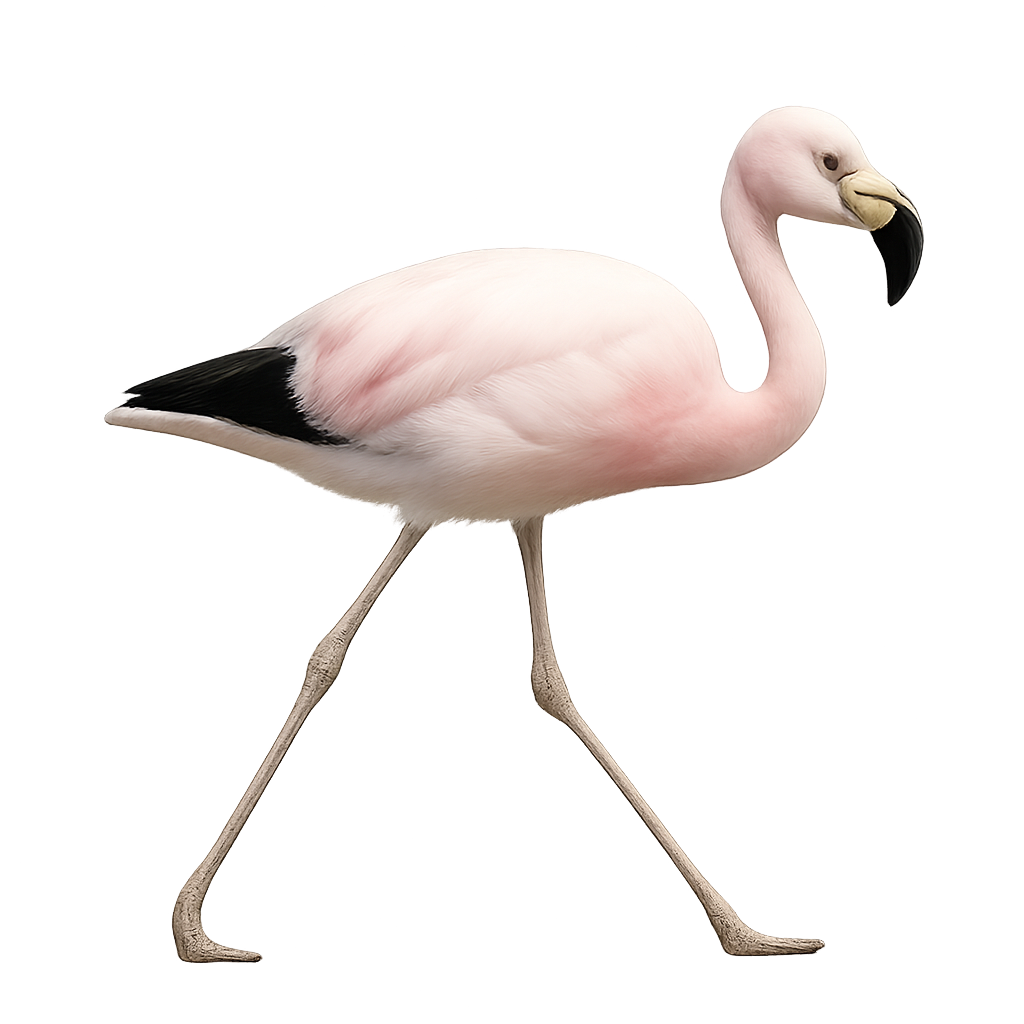Your wildlife photography guide.
Explore the andean flamingo in detail, study its behavior, prepare your shots.
Where to observe and photograph the andean flamingo in the wild
Learn where and when to spot the andean flamingo in the wild, how to identify the species based on distinctive features, and what natural environments it inhabits. The WildlifePhotographer app offers tailored photography tips that reflect the andean flamingo’s behavior, helping you capture better wildlife images. Explore the full species profile for key information including description, habitat, active periods, and approach techniques.
Andean flamingo
Scientific name: Phoenicoparrus andinus

IUCN Status: Vulnerable
Family: PHOENICOPHORIDAE
Group: Birds
Sensitivity to human approach: Suspicious
Minimum approach distance: 10 m
Courtship display: November to January
Incubation: 27-31 jours
Hatchings: November to February
Habitat:
Saline and alkaline lagoons of high altitude
Activity period :
Primarily active during the day, with peak activity in the morning and late afternoon.
Identification and description:
The Andean flamingo is a rare species of flamingo that inhabits saline and alkaline lagoons of the high Andes plateaus, primarily in Argentina, Chile, and Bolivia. It is distinguished by its white plumage and pale pink hues, as well as its graceful silhouette. This species is threatened by habitat loss and human disturbance and is listed as a protected species. It primarily feeds on algae and small crustaceans found in saline waters.
Recommended lens:
300 mm – adjust based on distance, desired framing (portrait or habitat), and approach conditions.
Photography tips:
Photograph the Andean flamingo using a telephoto lens to capture its grace and soft colors. It is best to photograph early in the morning or late in the afternoon, when the light is soft and the flamingos are more active. Be discreet, as these birds are very sensitive to human presence, especially when feeding or nesting.
The WildlifePhotographer App is coming soon!
Be the first to explore the best nature spots, track rutting seasons, log your observations, and observe more wildlife.
Already 1 432 wildlife lovers subscribed worldwide

